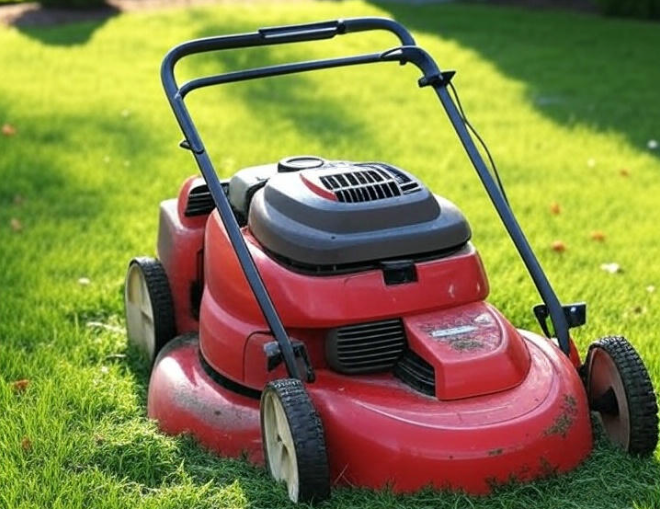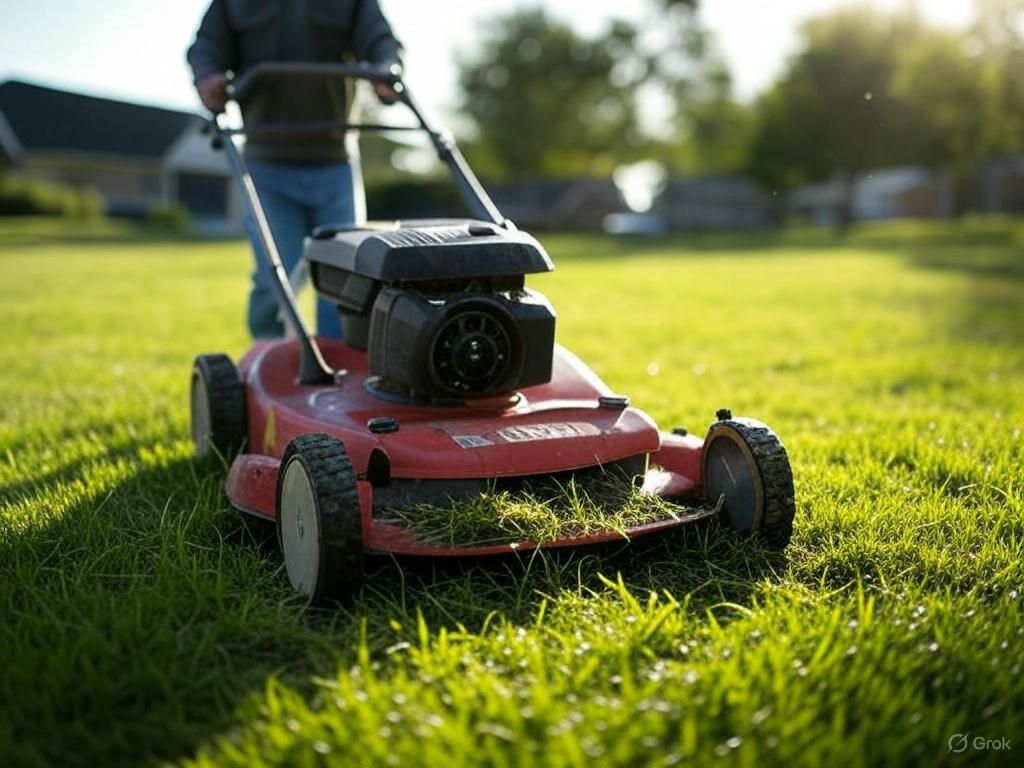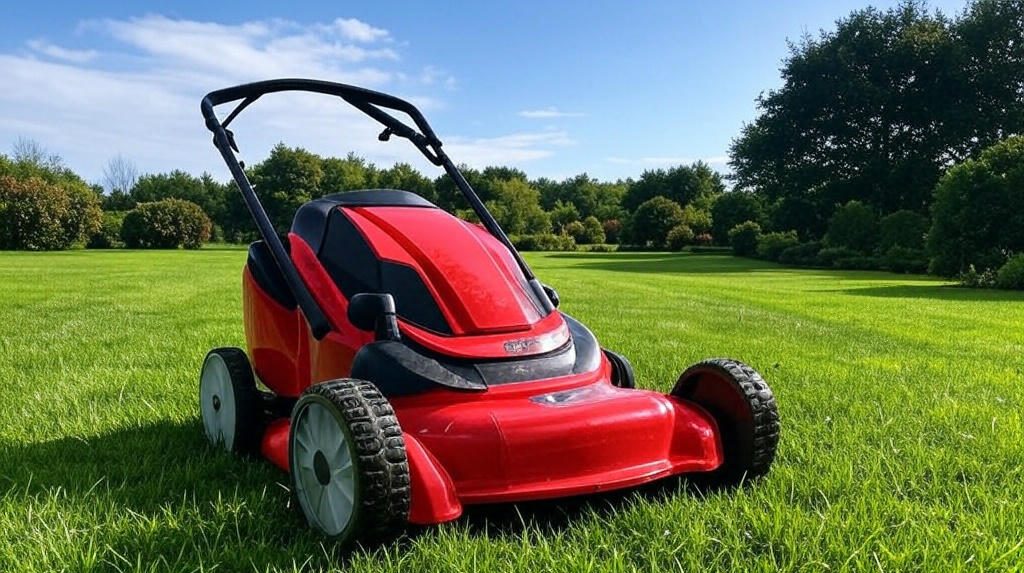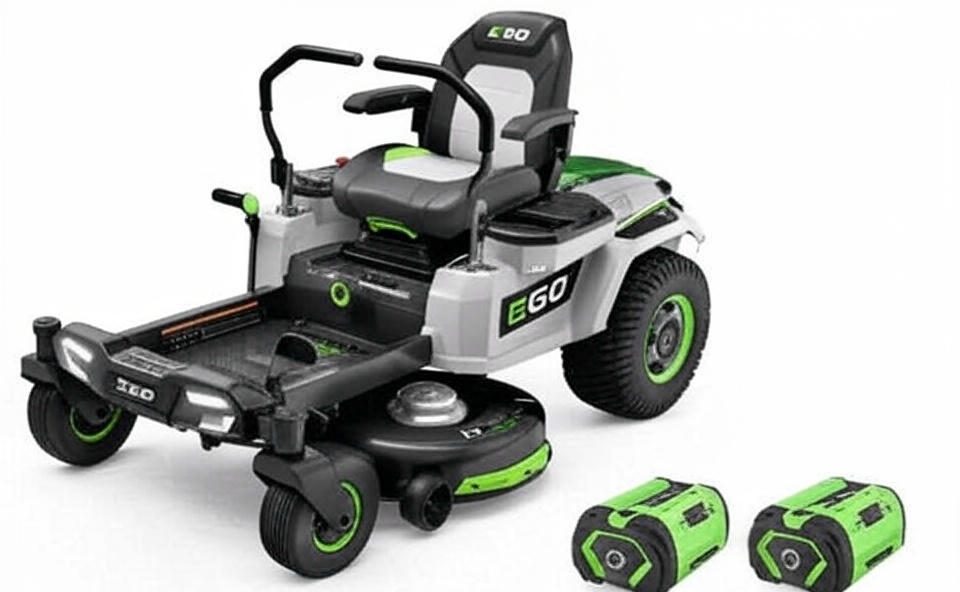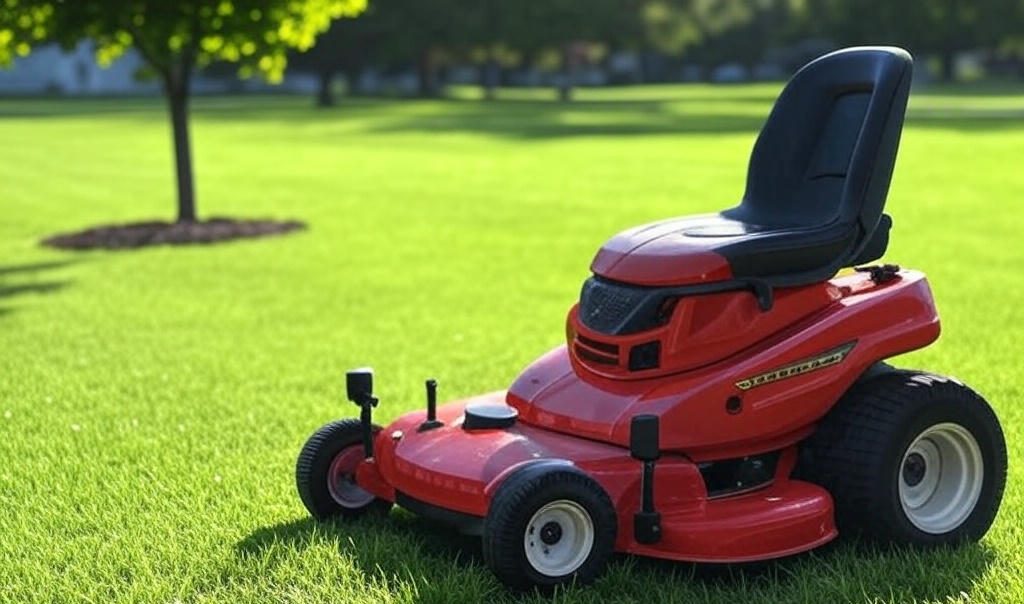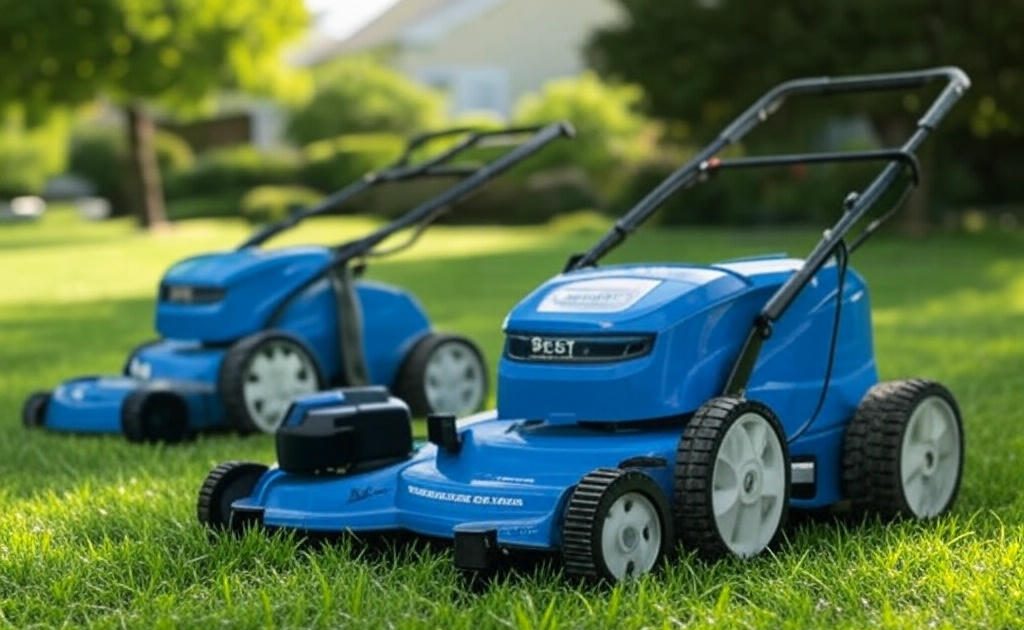You push the start button on your battery-powered lawn mower, and it springs to life. Three minutes later, it dies. You restart it, mow another patch, and it cuts out again. This frustrating cycle has you wondering if you made the right choice switching from gas to electric.
The good news? Most battery lawn mower cutting out problems have simple solutions. This guide walks you through every possible cause and fix, so you can get back to maintaining your beautiful lawn without interruptions.
Contents
- Understanding Battery Lawn Mower Power Systems
- Battery-Related Issues: The Most Common Culprit
- Overload Protection and Safety Features
- Maintenance Issues That Cause Cutting Out
- Electrical and Connection Problems
- Environmental and Usage Factors
- Troubleshooting Steps for Quick Solutions
- Prevention Strategies for Long-Term Reliability
- When to Replace vs. Repair
- Conclusion
Understanding Battery Lawn Mower Power Systems
Battery-powered mowers work differently than their gas counterparts. Instead of relying on combustion engines, these machines use rechargeable lithium-ion batteries to power electric motors. The motor draws consistent power from the battery pack, which means any disruption in this power flow causes the mower to shut down.
Electric mowers have built-in safety features that automatically stop the machine when they detect problems. While these safety mechanisms protect your equipment, they can also trigger when minor issues occur. Understanding this system helps you diagnose why your mower keeps stopping unexpectedly.
Battery-Related Issues: The Most Common Culprit
Insufficient Battery Charge
A partially charged battery often causes intermittent cutting out. Even if your battery shows some charge, it might not have enough power to sustain continuous operation under load. Grass cutting requires significant energy, especially when dealing with thick or wet grass.
Check your battery charge level before each mowing session. Most modern battery packs have LED indicators showing remaining power. If you see less than full charge, plug it into the charger before starting your lawn work.
Battery Age and Degradation
Lithium-ion batteries lose capacity over time. A battery that once powered your mower for 45 minutes might only last 20 minutes after two years of regular use. As batteries age, they also struggle to maintain consistent power output, leading to unexpected shutdowns.
Signs of battery degradation include shorter runtime, longer charging times, and the battery feeling unusually hot during use. If your battery is over three years old and showing these symptoms, replacement might be necessary.
Temperature Effects on Battery Performance
Extreme temperatures significantly impact battery performance. Cold weather reduces battery capacity, while excessive heat can trigger thermal protection shutdowns. If you’re mowing in temperatures below 40°F or above 90°F, your battery might cut out to protect itself.
Store your batteries in a climate-controlled environment when not in use. Avoid leaving them in hot garages or cold sheds, as temperature extremes permanently damage battery cells.
Loose Battery Connections
Poor connections between the battery and mower create intermittent power loss. Vibration during operation can loosen these connections, causing the mower to stop randomly. Grass clippings and debris can also interfere with proper battery contact.
Remove the battery and inspect the terminals for corrosion, dirt, or damage. Clean the contacts with a dry cloth and ensure the battery clicks securely into place. Wiggle the battery gently to test for loose connections.
Overload Protection and Safety Features
Overloading the Motor
Battery mowers have thermal overload protection that shuts down the motor when it works too hard. This commonly happens when cutting thick grass, tall weeds, or wet vegetation. The motor draws more current than normal, triggering the safety system.
Raise your cutting height when dealing with overgrown grass. Make multiple passes, removing only one-third of the grass height each time. This approach prevents motor overload and gives you better cutting results.
Wet Grass Cutting Issues
Wet grass creates additional resistance, forcing the motor to work harder. Moisture can also cause clippings to clump and clog the discharge chute, further increasing motor load. Many mowers shut down automatically when they detect this excessive strain.
Wait for grass to dry before mowing. If you must cut wet grass, use the highest cutting setting and move more slowly. Stop frequently to clear clumped grass from the deck and discharge area.
Blade Obstruction Problems
Debris wrapped around the blade shaft or caught in the cutting deck forces the motor to work harder. Twigs, wire, rope, or thick grass stems can jam the blade, causing immediate shutdown. This safety feature prevents motor damage and protects you from flying debris.
Always disconnect the battery before inspecting the cutting area. Remove any wrapped debris from the blade shaft. Check that the blade spins freely by hand before restarting the mower.
Maintenance Issues That Cause Cutting Out
Dirty Air Filters and Ventilation
Even battery mowers need proper airflow for motor cooling. Blocked air vents or dirty cooling fins cause the motor to overheat and shut down. Grass clippings, leaves, and dirt accumulate in these areas over time.
Clean your mower after each use. Use compressed air or a brush to remove debris from cooling vents and motor housing. Pay special attention to areas where airflow enters and exits the motor compartment.
Blade Problems
Dull or damaged blades require more power to cut grass effectively. The motor works harder to compensate, potentially triggering overload protection. Bent blades create vibration and uneven load, causing additional stress on the motor.
Sharpen your blade at least once per season, or more frequently if you mow regularly. Replace damaged or severely worn blades immediately. A sharp blade cuts cleanly with less motor strain.
Deck Height and Adjustment Issues
Incorrect deck height settings force the motor to work harder than necessary. Cutting too low in thick grass or setting the deck unevenly creates additional resistance. Some mowers automatically shut down when they detect excessive load from improper height settings.
Adjust your cutting height based on grass conditions. Start with a higher setting and lower gradually if needed. Ensure all deck wheels are set to the same height for even cutting.
Electrical and Connection Problems
Wiring Issues
Internal wiring problems cause intermittent power loss. Damaged wires, loose connections, or corroded terminals interrupt power flow to the motor. These electrical issues often develop gradually, causing increasingly frequent cutting out episodes.
Inspect visible wiring for damage, including cuts, burns, or loose connections. Look for signs of corrosion at electrical terminals. Professional repair might be necessary for internal wiring problems.
Switch and Control Problems
Faulty start switches, safety switches, or control modules cause random shutdowns. The safety bail switch, which stops the mower when released, might be malfunctioning. Control circuit problems can also trigger unexpected stops.
Test all switches and controls according to your owner’s manual. Clean switch contacts and ensure proper operation. Replace faulty switches promptly to prevent continued cutting out problems.
Motor Brush Wear
Some battery mowers use brushed motors that require periodic maintenance. Worn motor brushes cause inconsistent power delivery and eventual motor shutdown. This issue typically develops gradually over several seasons of use.
Signs of brush wear include decreased power, sparking, and unusual motor noise. Professional motor service or replacement might be necessary if brush wear is severe.
Environmental and Usage Factors
Grass Conditions and Cutting Challenges
Thick, tall, or wet grass creates more resistance than normal cutting conditions. The motor draws additional current to maintain blade speed, potentially triggering overload protection. Some grass types are naturally more difficult to cut than others.
Adjust your cutting approach based on grass conditions. Slow down in thick areas, raise the cutting height, or make multiple passes. Consider upgrading to a more powerful mower if you regularly deal with challenging grass conditions.
Terrain and Slope Challenges
Steep slopes require more power to maintain forward momentum and blade speed. The motor works harder on inclines, potentially causing thermal shutdown. Uneven terrain also creates variable load conditions that can trigger safety systems.
Use caution on slopes and consider alternate cutting patterns. Walk more slowly on inclines and take breaks to allow the motor to cool. Some slopes might require professional service or different equipment.
Operating Technique
Aggressive mowing techniques stress the motor unnecessarily. Pushing too fast, forcing the mower through thick patches, or ignoring warning signs leads to frequent shutdowns. Proper technique extends battery life and prevents cutting out problems.
Develop smooth, consistent mowing patterns. Let the mower do the work rather than forcing it through difficult areas. Pay attention to motor sound and performance changes that indicate developing problems.
Troubleshooting Steps for Quick Solutions
Immediate Checks
When your mower cuts out, start with these quick diagnostics. Check battery charge level and connections first. Examine the cutting area for obvious obstructions or wrapped debris. Verify that all safety switches engage properly.
Allow the mower to cool for 10-15 minutes if it feels hot. Overheating protection requires cooling time before restart. Clean any visible debris from air vents during this cooling period.
Progressive Diagnosis
If simple checks don’t solve the problem, work through more detailed diagnostics. Test the mower on easier grass to isolate load-related issues. Try a different battery if available to eliminate battery problems. Document when cutting out occurs to identify patterns.
Keep notes about cutting conditions when problems occur. Weather, grass height, battery age, and mowing duration all provide clues about the root cause.
Professional Assessment
Some problems require professional diagnosis and repair. Internal electrical issues, motor problems, or complex control system failures need expert attention. Don’t attempt repairs beyond your skill level, as improper work can create safety hazards.
Contact your dealer or authorized service center for persistent problems. Many manufacturers offer diagnostic services that quickly identify complex issues.
Prevention Strategies for Long-Term Reliability
Regular Maintenance Schedule
Establish a routine maintenance schedule to prevent cutting out problems. Clean your mower after each use, check battery connections monthly, and inspect the blade regularly. Seasonal maintenance prevents small issues from becoming major problems.
Create a maintenance log tracking battery performance, runtime, and any issues. This record helps identify developing problems early and provides valuable information for warranty claims.
Proper Storage Practices
Store your mower and batteries properly to maximize lifespan. Keep batteries at partial charge in moderate temperatures. Protect the mower from moisture and extreme temperatures. Proper storage prevents many cutting out problems before they start.
Clean your mower thoroughly before storage. Remove all grass clippings and debris that could cause corrosion or attract pests. Check all connections and moving parts for proper operation.
Battery Care and Management
Extend battery life through proper charging and usage practices. Avoid completely draining batteries and don’t leave them on the charger indefinitely. Rotate multiple batteries if available to distribute wear evenly.
Monitor battery performance and replace aging batteries before they cause problems. Investing in quality replacement batteries prevents frustrating cutting out episodes during critical mowing times.
When to Replace vs. Repair
Cost-Benefit Analysis
Consider repair costs versus replacement value when dealing with persistent cutting out problems. Older mowers with multiple issues might cost more to repair than they’re worth. Factor in your time and frustration when making this decision.
Get quotes for major repairs before proceeding. Sometimes a new mower offers better value than expensive repairs on old equipment.
Warranty Considerations
Check your warranty status before paying for repairs. Many cutting out problems fall under manufacturer warranties, especially on newer equipment. Document problems carefully to support warranty claims.
Keep receipts and maintenance records to demonstrate proper care. Warranty coverage often depends on following recommended maintenance procedures.
Conclusion
Battery lawn mower cutting out problems usually have straightforward solutions. Most issues stem from battery problems, motor overload, or basic maintenance needs. By following systematic troubleshooting and implementing preventive maintenance, you can enjoy reliable operation from your battery-powered mower.
Remember that battery mowers require different care than gas models. Understanding these differences helps you avoid common problems and maintain peak performance. With proper attention and care, your battery mower should provide years of reliable service without frequent cutting out episodes.
The key to success lies in recognizing early warning signs and addressing problems promptly. Regular maintenance, proper usage techniques, and quality batteries keep your mower running smoothly throughout the cutting season. When problems do occur, systematic diagnosis usually reveals simple solutions that get you back to mowing quickly.
